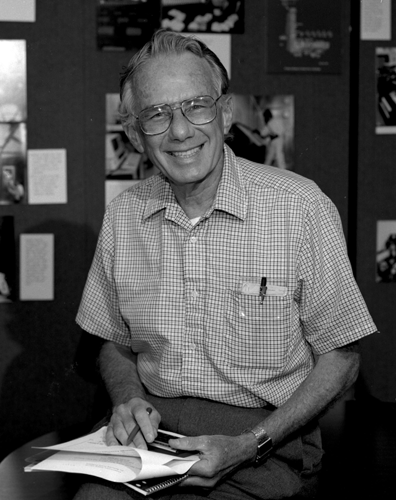

In Washington, Rosenfeld will sit on President Clinton's National Science and Technology Council. He will also serve as national spokesperson for the Administration's "Cool Communities" program and will help steer through the political process a proposed new "government-sponsored enterprise"-- called EFFIE MAE for Energy Efficiency Mortgage and Loan Agency--that would guarantee loans for retrofitting energy-inefficient public buildings.
Rosenfeld spent the first twenty years of his professional life as a high-energy physicist before switching to the development of energy-efficient technologies for buildings in 1973 (after the OPEC oil embargo). For this work, he won DOE's 1993 Sadi Carnot Award in Energy Conservation. We look forward to his many contributions from "within" the government, and to having Art back at LBL after his stint in Washington.
Reducing Greenhouse Gas Emissions
As part of the Climate Change Action Plan effort to stabilize greenhouse gas
emissions, researchers from the Center for Building Science's programs are
working on five projects to improve energy efficiency in the residential sector.
These multiyear projects are sponsored by the Environmental Protection
Agency's Global Change Division, which is developing voluntary "market-
pull" programs that reduce pollution, including greenhouse gas emissions, by
accelerating the penetration of new or underused energy-efficient technologies.
This work builds on and complements the research at LBL supported by
DOE.
Four of the projects focus on specific technologies developed by LBL, while the fifth will conduct market assessments of these and many other residential technologies to identify the most effective means of increasing their market shares. A component of all the projects is to help EPA design and implement programs to promote these technologies in the marketplace, a relatively new application of the Center's energy-efficiency expertise. The projects are:
Rich Brown
![]()
Lighting
Michael Siminovitch & Evan Mills
(510) 486-5863
Windows
Dariush Arasteh
(510) 486-6844
Thermal Distribution
Mark Modera
(510) 486-4678
Cool Communities
Hashem Akbari
(510) 486-4287
Market Analysis
Jonathan Koomey & Rich Brown
(510) 486-5974
LBL-Russia Collaboration on Lighting
In a newly minted collaboration, LBL and Russian researchers will explore a
novel emerging technology for efficient lighting. Center researchers Michael
Siminovitch, Evan Mills, and Francis Rubinstein will work with Dr. Julian
Aizenberg of Russia's Lighting Research Institute to investigate "light pipes".
These typically hollow tubes use highly reflective or light-conducting
materials to transport and distribute light from a bright centralized source.
Light pipes are a particularly promising technology for use with a new
generation of small, highly efficient, high-output lamps now under
development. A local Bay Area company, Peerless Lighting, will participate
in the collaboration by helping to identify critical manufacturing and market-
acceptance challenges.
The potential energy and non-energy advantages of light pipes include easier heat removal/recovery from lamps and ballasts, lower maintenance costs (fewer lamps and ballasts to replace), the ability to transmit daylight to non- perimeter offices, and greater safety when used in settings with an explosion hazard.
The project will begin with an assessment of the 30-year Russian research and deployment program on light pipes. Russia has much more experience with this technology than any other country. Researchers will then review the experience in eight other countries, and conclude with an examination of the technology's future directions and its applicability to the U.S. environment.
This collaboration comes at a time when hard economic conditions in Russia have placed the lighting research establishment in jeopardy. While not long ago 1,200 people worked in Aizenberg's institute, today only 400 remain and about two-thirds of the facility has been rented as office space to private enterprises. Many Russian lighting experts today work in banks.
--Evan Mills
![]()
Evan Mills
Center for Building Science
(510) 486-6787; (510) 486-5394 fax